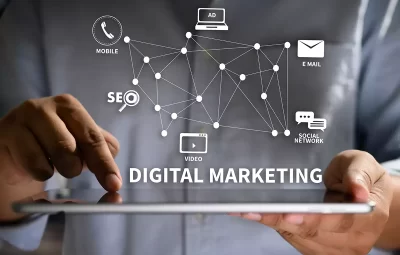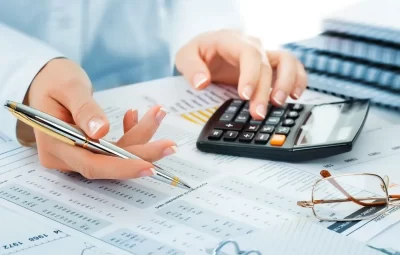Let’s be honest. The old “take, make, dispose” model is… well, it’s running on fumes. We dig stuff out of the ground, use it for a short while, and then bury it in a giant hole. It’s a linear system in a world that is, frankly, anything but. Nature is the ultimate circular economy—nothing is truly wasted. A fallen tree becomes a home for insects, which feed birds, and its decaying matter nourishes new growth.
So, why aren’t our businesses operating the same way? The good news is, a powerful shift is underway. Companies are discovering that designing out waste isn’t just good for the planet—it’s a massive economic opportunity. This is about building resilient, future-proof companies. Let’s dive in.
What Exactly Is a Circular Business Model, Anyway?
Forget the textbook definition for a second. Think of it as a shift from being a “seller of stuff” to a “manager of resources.” You stop thinking about a product’s end-of-life as a failure and start seeing it as the beginning of its next life cycle. The core idea is to keep materials, components, and products at their highest utility and value for as long as humanly possible.
It’s a fundamental redesign of how value is created and delivered. And it leads to some incredibly innovative and, honestly, more interesting ways of doing business.
Five Powerful Models Making Waves Right Now
1. The Circular Supply Chain: Starting from Scratch
This model tackles the problem at the source. Instead of relying on virgin, finite resources, companies use renewable, recycled, or bio-based materials. It’s about closing the loop right from the very beginning.
A great example is the interface carpet company. They’ve pioneered a process where discarded fishing nets, of all things, are collected from oceans and recycled into new carpet tiles. They’re not just making less bad products; they’re actively cleaning up the environment as part of their supply chain. That’s a powerful story.
2. Resource Recovery: There’s No Such Thing as “Away”
You know when you throw something “away”? There is no “away.” This model is built on that simple, inconvenient truth. It’s about recapturing value from waste streams, turning what was once a cost (disposal) into a revenue stream.
Think of a company like TerraCycle. They’ve made a business out of the “unrecyclable,” creating systems to collect and repurpose everything from cigarette butts to coffee capsules. They see a landfill and see a mine—a source of valuable materials just waiting to be tapped.
3. Product Life-Extension: The Art of Making Things Last
This one seems obvious, but it’s been largely ignored in our culture of planned obsolescence. The goal here is simple: keep products and components in use for longer. How? Through repair, refurbishment, remanufacturing, and upgrades.
Patagonia’s “Worn Wear” program is legendary. They actively encourage customers to repair their gear, offering tutorials and repair services. They even sell refurbished clothing. It builds insane brand loyalty and directly challenges the “buy new” impulse. It tells a story of quality and care.
4. Sharing Platforms: Getting More from What We Already Have
This is about maximizing the use of underutilized assets. Why should everyone own a drill that they use for 15 minutes total in its lifetime? Sharing platforms, from peer-to-peer apps to company-led services, increase the productivity of goods, meaning we need to make fewer of them in the first place.
Companies like Zipcar or even tool-lending libraries are perfect examples. The value isn’t in selling you a car; it’s in selling you access to a car when you need it. It’s a fundamentally different relationship with products.
5. Product as a Service (PaaS): Pay for Performance, Not Ownership
This might be the most radical shift. Here, the customer pays for the service a product provides, not for the physical product itself. The manufacturer retains ownership—and therefore responsibility for the product’s entire lifecycle.
Think about Philips’ “Light as a Service.” A company doesn’t buy lightbulbs from Philips; they pay for a certain level of illumination. Philips installs, maintains, and upgrades the lighting systems. Because Philips owns the fixtures, they have a huge incentive to make them incredibly durable, energy-efficient, and easy to disassemble and recycle. Their profit is tied to efficiency and longevity, not to selling more bulbs. The business model aligns perfectly with circular economy principles.
Why Bother? The Tangible Benefits Are Real
Sure, it feels good to “do the right thing.” But the business case is what makes it stick.
Cost Savings: Using recycled materials is often cheaper than virgin ones. Designing for disassembly can slash manufacturing costs. And recovering materials? That’s like finding money in your own trash.
Risk Reduction: You become less vulnerable to volatile commodity prices and supply chain disruptions for raw materials. If your supply chain is the city dump, your sourcing is pretty stable.
Customer Loyalty & Brand Power: Modern consumers, especially younger generations, are actively seeking out responsible brands. A genuine commitment to circularity is a powerful differentiator. It builds a community, not just a customer base.
Innovation Driver: The constraints of a circular model force incredible creativity. You start asking questions like, “How can we design this without glue?” or “How can we make this modular?” That’s where breakthrough ideas are born.
Okay, So How Do You Actually Start?
It can feel overwhelming. Don’t try to boil the ocean. Start small. Pick one product line. Run a pilot project.
First, map your material flows. Where does your stuff come from, and where does it go? You’ll likely find low-hanging fruit—waste streams that could be monetized, products that are trashed but could be refurbished.
Then, rethink your design process. This is the big one. Embed circularity into your DNA from the very first sketch. Design for disassembly. Design for durability. Choose materials wisely.
And finally, explore new partnerships. The circular economy is collaborative. You might need to partner with a waste management company, a refurbisher, or even a competitor to create a viable reverse logistics system. It’s a team sport.
The Bottom Line: It’s a Journey, Not a Destination
Transitioning to a sustainable business model for a circular economy isn’t about finding a perfect, finished state. It’s a continuous process of learning, iterating, and improving. There will be stumbles. Some ideas will flop.
But the direction is clear. The future of business isn’t linear. It’s circular, regenerative, and frankly, more intelligent. It’s a future where we stop mining the earth for materials we use once and start mining our own ingenuity instead. The question isn’t really if your business will adapt, but when—and how creatively you’ll manage the turn.








